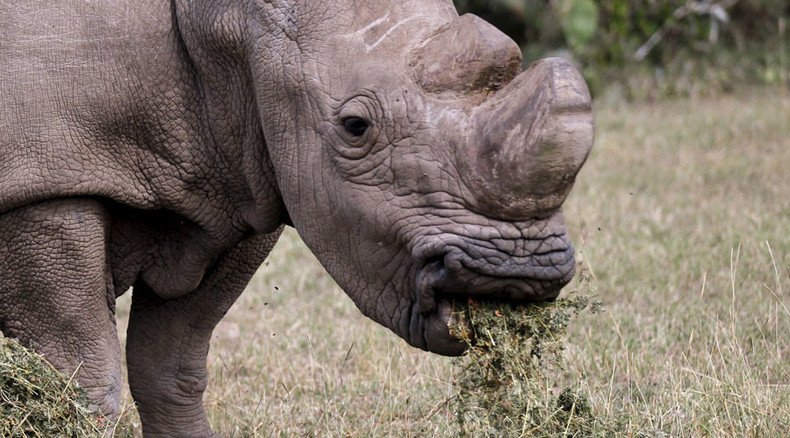Rhinos to get ‘horn-cams’ to catch poachers red-handed

In an effort to curb the poaching of low-population animals, British activists have made a monitoring device designed to save endangered species such as rhinos, tigers and elephants. It has already started transmitting POV videos from rhino “horn-cams”.
The webcam 24/7 monitoring system called Protect RAPID (Real-time Anti-Poaching Intelligence Device), developed by a non-profit conservation society, Protect, is seeking to eliminate animal poaching most commonly registered in Africa.
The monitoring system includes a GPS sensor with a heart rate monitors and even video cameras installed on the animal. Once attached the camera starts broadcasting real time images, GPS location and information on the state of the animal to a control center.
Animals can walk unmonitored for weeks, but once the heart rate goes up it triggers an alert which prompts the operators to check the animal’s state and notify anti-poaching teams on the ground of a possible danger. It is up to them to catch the perpetrators.
“With this device, the heart rate monitor triggers the alarm the instant a poaching event occurs, pinpointing the location within a few meters so that rangers can be on the scene via helicopter or truck within minutes, leaving poachers no time to harvest the valuable parts of an animal or make good an escape. You can’t outrun a helicopter, the Protect RAPID renders poaching a pointless exercise,” said Dr Paul O'Donoghue, chief scientific adviser for Protect, who has worked with the endangered black rhino populations for more than 15 years.
Only prototypes are active right now, but the non-profit hopes for a wider launch by the end of the year.
“We expect to have the first rhino prototypes out within months and are just beginning development on versions for tigers and elephants. We hope to have a fully functional control centre established early next year,” said Steve Piper, a director of Protect.
So far, the experiment has been welcomed by experts as a groundbreaking new technology that will eventually save lives.
“These devices tip the balance strongly in our favor, if we can identify poaching events as they happen we can respond quickly and effectively to apprehend the poachers; it’s very exciting to be able to work with Protect on the first field trials of the Protect RAPID with our own Southern black rhino population,” said Dean Peinke, Specialist Mammal Ecologist for the Eastern Cape Parks and Tourism Agency.
TY everyone for an amazing launch yesterday, please keep the momentum going, RT for #rhinocam! #poaching#protectpic.twitter.com/hZNc8l55Sm
— Protect (@weareprotect) July 21, 2015Part of the problem with poachers, Protect argues, is that anti-poaching forces are “unaware of poaching events” until after the brutal mutilation of animals, that often leads to their death. Applying the new technology will lead to more arrests and convictions and will also serve as a deterrent to poachers.
In their latest press release, the animal rights group claims that Rhino poaching increased by a staggering 9,300 percent since 2007 in South Africa alone. Rhino poaching in South Africa is hitting hit record levels, the country’s environment minister warned in May, with an 18 percent rise in the first four months of 2015.
“Currently a rhino is butchered every six hours in Africa, the issues are many, but there's far too much money at stake to believe that legislation alone can make the difference, we had to find a way to protect these animals effectively in the field; the killing has to be stopped,” O'Donoghue explains.
Rhinos are hunted for their horn which is highly prized in traditional Asian medicine. In alternative medicine, the horn is used as a treatment for nosebleeds, strokes, convulsions, and fevers.
As far as elephant poaching, Wildlife Conservation Society believes that Central African forest elephants were depleted by 62 percent between 2002 and 2011, with some 25,000 African elephants being killed every year. African elephants are poached for their ivory tusks – the heaviest teeth of any animal alive.
Lack of employment and limited potential in African and Asian rural areas serve as the key motives for poaching of exotic animals. Locals sometimes resort the sale of bush meat, which attracts high prices in urban centers. Body parts of wildlife are also in demand in traditional medicine and ceremonies. The poaching market is run by well-organized gangs through a complex network linked to markets outside the their countries of origin.











